Miscellaneous Mimulyus - a flower that always leaves for itself pleasant memories. Velvet inflorescences, degraded summer paints, dress all the corners of the garden, balconies, terraces. In addition, the mimeulyus is undemanding to the soil, and can revive the sections deprived by the sun, which other flowers rejected. Not offended by mimeulyus and species diversity. This genus boasts more than 150 varieties. On how to grow this unusual flower in my site, we will also tell me further.
Mimulyus, cultural description
Mimulus is a numerous genus, which in nature grows in moderate climatic conditions throughout the excesidity of Europe. Until recently, this kind was attached to Norichnikov, but now it belongs to the Farm family. In the wilderness of Mimulyus - a long-term view, in culture - annual, although some of its varieties can survive even at -20 ° C.
In the people, Mimeulyus was nicknamed with a pubastic for a kind of inflorescences in the form of a mouth with a pending lower lip. There is a flower and another name - Monkey Flowers ("Monkey Flowers"). So it is called the Americans, whom the Mimulyus Bud reminds the Mord of the Monkey.
- Mimulyus, depending on the species, can grow from 70 cm (for herbaceous species) to 150 cm (for semi-staples).
- Stems of the Gubaski also differ: there may be a reprehension, gustant and even sharpening. The surface of the stalks is naked and pubescent.
- Foliage on mimeus sebels The opposite, the shape of the ovoid sheet.
- The inflorescences of mimeusus of the wrong shape collected in fragile brushes. Buds are monophonic or motley up to 5 cm in diameter.
- Flower wreath in mimeulyus tubular, the upper lip of the gubask is dicker and slightly move back, and the lower consists of three blades and put forward.
- The color of the inflorescence is the most different: crimson, bright yellow, saturated-orange, painted with contrasting strokes.
- Gubastic fruit is a small box in which small seeds are sleeping. After ripening, it is lighter in half.
Speed \u200b\u200bspecies Mimulyus
In the culture of herbastik, he has not yet gained well-deserved popularity, therefore it is grown only a bit of varieties. You can meet the following types in the gardens.
- Mimulus Aurantiacus (Orange Gubastic) - His natural growth medium is southeast of the United States. The form is extremely warm, and with optimal conditions, there are shoots up to 90-100 cm. Among the dark green foliage with glitter bloom the inflorescences of the orange, less often of the salmon-pink color. The collar of the flowers of the middle diameter (3-4 cm). For the shoots of this gubastics, it is required to build a support so that they do not be fucked and did not quit on the ground. However, this species can be successfully grown in suspended vases. The view can be raised as a perennial, if we provide it with wintering in the indoor room.
- Mimulus Puniceus (in the people - Momuelus grenade) - California's average native, is also found in the border zone of the United States and Mexico. Strengthening the stalk covered with rich-green leaves of the oblong shape. Large inflorescences are painted in a flickering wine, and the middle is decorated with orange strokes.
- Mimulus Luteus (Mimulyus Yellow) "This bright spotted flower found a French sacred faye in Chile. For the species are characteristic of the stems (bare or highly pubescent), reaching 60-70 cm in height. The foliage of the heart-shaped form, small teeth are concentrated along the edges. Petals of yellow flowers, and on the bottom lip there is a large crimp spot. Numerous red dots are noticeable towards the middle.
- Mimulus Guttatus (Other Gubastic Name) - At the time of discovery (1808), this species met only on Western lands of North America. But thanks to his inherent polymorphism, the species quickly mastered new territories towards New Zealand and Europe. A grift mimeus grows to 80 cm. Its stems are branched, and the flowers are bright yellow with a small brick of the crimson color in the center of the zea. The view has a nourgistic variety (Richard Bish) for which a characteristic grayish shade of sheets with a white cut.
- Mimulus Ringens or Gubastic Open - The height of branching stalks of the form depends on the variety and varies from 20 to 100 cm. Mimulyus foliage the opposite, calm green, oval shape. In the sinuses of the leaves, delicate small flowers of the gentle lavender shade are blooming.
- Mimulus Cardinalis (often called Purple Gubaste) - got to us from North America. He has stencils, very branched. The form is represented by a small bush with a height of 45-55 cm. Mimeulus foliage egg-shaped, placed oppositely, along the edges of the bodied by the teeth, alkali performs on the surface. At the type of fragrant flowers of an expressive form. Tubular buds are characterized by a scarlet-red. Inflorescences are kept on loose elongated flowers and bang in the sinuses of leaves.
In culture, the view consists of several varieties:
- Red Dragon - a grade with juicy crimson boots;
- Cardinal - a plant with large challenges of a Charlakhovo-red color with a dense yellowish crap;
- Auratikus - grade with bloody-orange flowers;
- Rose Quen - forms scarlet buds with a darker grip.
- Mimulus Tigrinus (Other Names: Leopard, Hybrid or Tigrinus Gubastic) - A group of hybrid varieties derived on the basis of yellow and cracked mimeulyus. Low plants with expressive motley colors collected in busy inflorescences.
The most popular varieties:
- Brasss Mankins - ampel grade; The color of yellow-orange buds;
- Foerking - a variety is distinguished by red inflorescences, the petals of which are completely covered with brown gap, and zev painted in yellow color;
- Magic Spots - a plant height up to 15 cm, flower petals acquire a creamy white shade and covered with raspberry spots.
- Twinkle Mikst - low-speed ranges with inflorescences of different shades: from snow-white to brown-bugs, from monophonic to contrast;
- Viva - the grade does not exceed 25 cm high, bright yellow flowers with large bloody spots.
- Mimulus Cupreus (Copper Red Gubastic) - Compact perennial. The stalks are bare up to 15 cm in height, slightly rise above the ground, and among them there are stuffing inflorescences on thin blooms. Their color is copper with a wine or orange overflow. Buds are small up to 3 cm in the diameter, gradually blossom and painted in a golden tone.
The species includes several garden forms:
- Rother Kaiser - grade with deep red color flowers;
- Andan Nimif is a plant with cream inflorescences, littered with a gentle-purple grip;
- Red imperler - blooms bright red inflorescences.
- Mimulus Primuloides (known as Mimulyus primrose-shaped) - View with the socket of oblong leaves, over which graceful flowers with yellow buds are towering. View of many years, the height of the shoots is not more than 15 cm with height.
- Mimulus Moschatus (Gubastic Musky) - Endemic North America. It is a grassy perennial culture. Stems upright, and some varieties are sharpened, covered with pile, length 30-35 cm. The leaves are actively separated by a mucus that spreads the musky aroma, oval, the opposite, length of the sheet 5.5-6 cm. Flowers miniature, honey colors.
Mimulyus, growing from seeds
Gubastic is preferably grown by a seaside method. Seed seeds are not difficult, but since they are very small and more resemble dust, you need to work with them neatly. Their size is so small that in 1 g it is possible to count more than 10 thousand pieces.
When you need to sow the seeds of mimeulyus
A favorable period for sowing seed is determined by the climatic zone and weather. In the southern regions, mimeus seeds can be heated in February. In cooler latitudes, it is better to postpone the sowing events until March-April.
Seeds seed into prepared containers with cells, which are subsequently placed on the balcony or in a heated greenhouse.
Selection of soil and sowing of mimeus seeds
Mimeuluus seeds safely spare on the soil enriched with organic. Therefore, the soil is better to use a nutritious with a low or neutral pH.
Careful universal soil is suitable, but it needs to be enroached peat and sand. Also welcome the admixture of coconut fiber and perlite.
Ideally, you need to do the ground yourself. For this purpose, a part of the turf and two parts of the sheet substrate are connected, as well as one part of the peat and sand, and three parts of humus. The resulting mixture should be loose, moistened and breathable. It will also be needed to make a drainage ball at the bottom of the container.
Seeding technology Gubastics is due to their size. They are neatly scattered over the soil in cassettes, not closeing them in the ground. If you bury the seeds too deep, they will not be able to climb.
Then the soil is moisturized from the spray gun, the container is covered with glass, film or cropped cups of plastic. When maintaining air temperature at the level of 16-18 ° C, shoots appear in 4-7 days.
Mimulyus, conditions of cultivation of seedlings
After the appearance of shoots, the soil can not be poured, since weak sprouts can be very damaged even to the weakest pressure. To maintain moisture, you only need to use a finely dispersed pulverizer.
At this stage, you need to ensure that the soil does not drive, but the excess of moisture is also unwanted. Too frequent soil irrigation can cause the fungal disease "Black leg", and shoots will die. Also, seedlings need to provide plenty of solar or artificial light.
When a seedlist is formed on the sprouts, the container is transferred to the cool room with a temperature of +10 to + 15⁰s. This will make it possible to slowly slow the growth of seedlings, otherwise it is badly survived by the pickup. Also, watering decreases, since excess moisture can harm young spons.
Picking of Mimulyus seedlings
Picking Gubastics is required. Since small seeds cannot be uniformly distributed across the cells, germs germinate is boring and unable to develop normally.
After the formation of four full-fledged leaves and roots, which seemed from the lower hole, the plants are planted into separate cups. It happens after 2-2.5 weeks after sowing.
For the dive perfectly suitable cups of 200 ml, they can be made of plastic, paper, peat. In one cup you can settle up to four plants.
In order for the Mimulyus seedlings well to post the pickup, it is necessary to conduct it in such a sequence:
- Before picking, you need to pour the soil well, give her a couple of hours to moistle enough.
- With the help of a miniature shoulder blade or other fixture with a flat surface, each sprout is approaching turns.
- You can capture seedlings for a seedy leaf, and you should not touch the leg.
- Separating the sprout, you need to gently print it to the root to stimulate the growth of a healthy root system.
- Then the seedman is immersed in a slight recess in the soil slightly below its point of growth.
Mimulyus, landing in open ground
Seedlings of the Gubastics are fragile and it is difficult to work with it. However, Mimeulyus is developing rapidly, so you need to have a landing on the flower in time.
When to plant mimeulyus to ground
As a rule, peeled seedlings are planted into the garden in the last decade of May. Until that time, seedlings have time to create and grow well. The ideal age of seedlings for landing is 6-8 weeks.
A place for mimeusus can be chosen solar, but under the pasting sun mimeulyus can burn and plant. Therefore, it is better to stop at a moderate half. The soil will need a weakly acidic, linous with an admixture of peat.
Momulyus planting scheme in the garden
Before boarding the pubastics, the area will jump, loose and watered. Then the wells are formed, in which the rhizome will be able to fit along with the land. The distance between the seedlings should be 25-30 cm. Seedlings transplant with transshipment.
In the southern strip, seeds are practiced in open ground. If the temperature in the second half of April does not fall below 16-18⁰, the seeds are sown without cultivating. The flower lea is covered with the adhesive material until the first searches appear. When seedlings are completely proceeded, they are thinned.
Mimulyus, landing and care in open soil
Growing Gubastics rarely delivers a lot of trouble. All he needs is watering, the capper and fertile soil. Mimulyus, which is very simple, easily coming up after transshipment on the flower, and quickly blooms.
Watering and feeding Mimeulyus
Gubastic is a moisture-loving look, so it is necessary to provide regular watering. All summer period, the soil must be well moistened, but the water in the ground should not be stated. Excess moisture may entail the appearance of holes on the foliage or the development of rotary bacteria. After irrigation, it is desirable to loosen the land around the mimeus, to remove sprouted weeds.
The feeder should be carried out once in 30-45 days. For this, 15-20 ml of organic fertilizer divorces in a bucket of water.
Flowers Mimulyus twice: in spring and autumn. The first period lasts a couple of weeks. When the last bud plowed, the above-ground part of three quarters is cut and fertilizers are entered. Soon, Mimulyus will acquire new shoots and begins to prepare for re-flowering.
Advice! If the mime flowering is delayed, you need to make magnesium sulfate once.
Pipher Mimulyus.
So that young seedlings actively branched, make the seign. The root of buds appears quickly, so it is important not to miss the moment, otherwise you will have to turn the first buds.
The shaped bush will look good, his shoots will be strong and thick, besides, buds will begin significantly more. Promotes the beautiful formation of a bush and a rich blossom regular removal of dry shoots.
Important! Mimeulyus badly tolerates excess nitrogen fertilizers. If you make them too much, shoots will stretch and weakened.
Mimulyus diseases and pests
Slugs and snails are of the pests for the gubastics. Their quantity increases in conditions of high soil humidity near the plant. In order to prevent the invasion of these pests of the land near the plant, it is necessary to climb sawdust.
Sometimes the plant can affect the whiteflies and aphid. Aktellik will help destroy insects.
The development of the "black leg" and pulse dew is also associated with excess of moisture. To cure mimeulyus will help the normalization of watering. Especially often these diseases appear during the period of growing seedlings. Therefore, for the prevention of seedlings, it is necessary to spray with a solution of any fungicide.
Mimulyus in landscape design
Mimulyus, whose cultivation gives pleasure to every gardener, will become a real decoration of the spring garden. He will quickly fill empty places on the flowerbed, revantly revives the bending tracks, charm his beauty in solitary landing. The moisture-lobby gubastic is perfectly mastered on wet areas, near water bodies, artificial ponds.
Use Mimulyus to create colorful alpinarias, motley beds, suspended compositions. Also adding gubastic varieties are fast-growing soil material. It can be found next door to Floxami, Barwinccoma, buttercups, stamping.



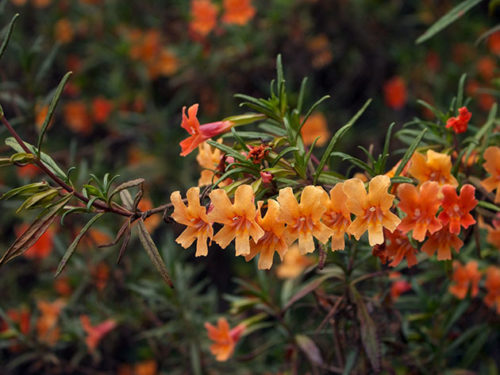
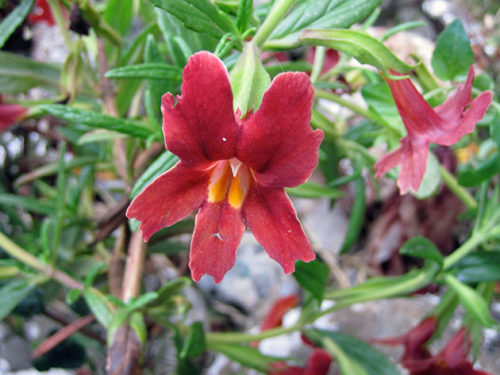
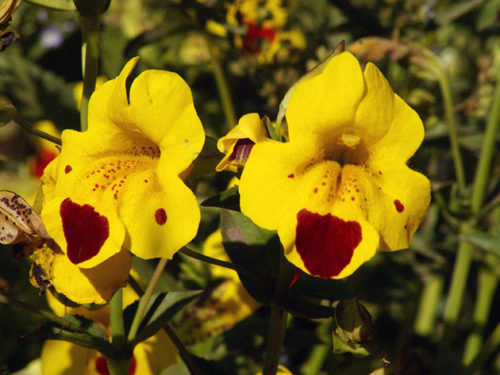
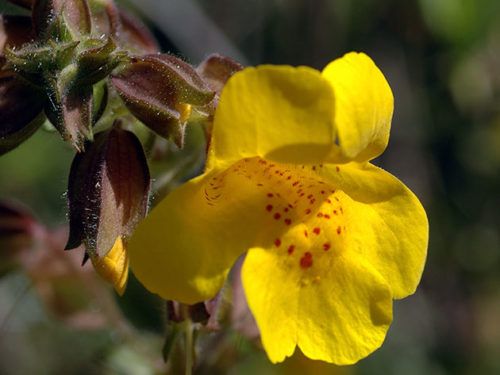
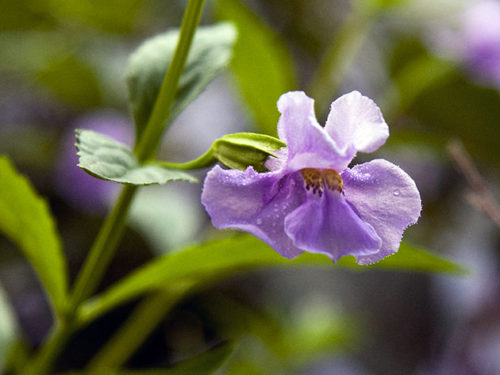

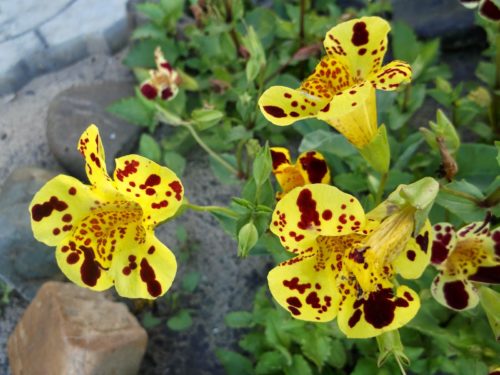
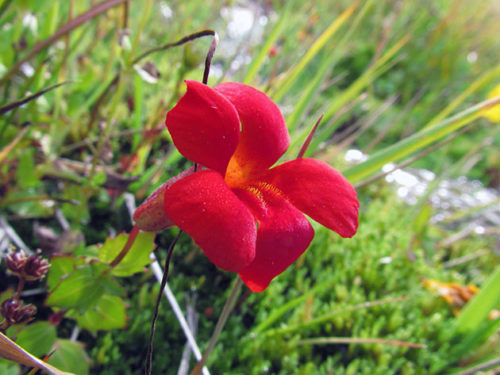
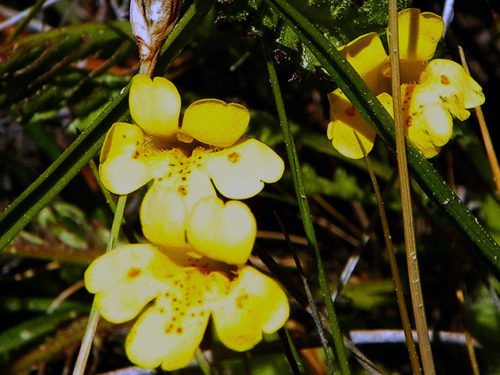
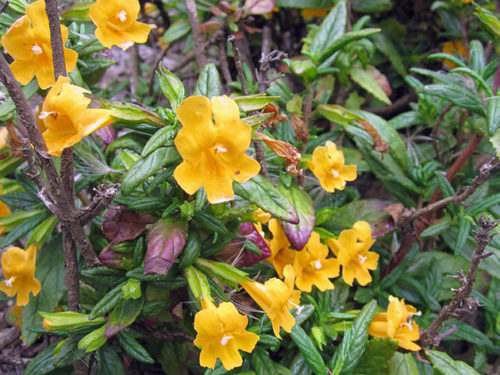

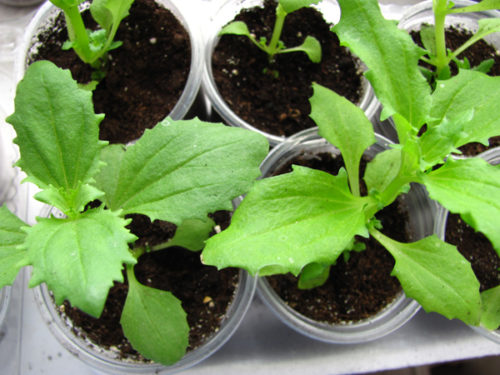
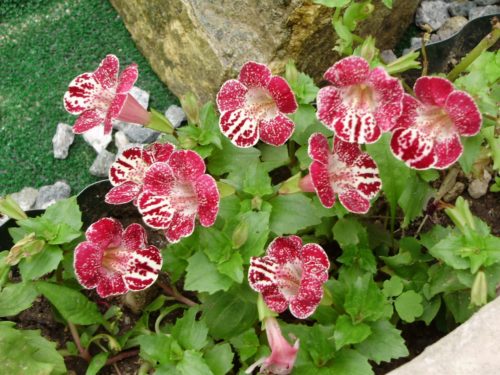
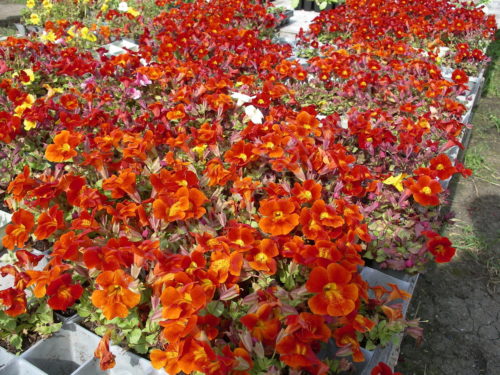
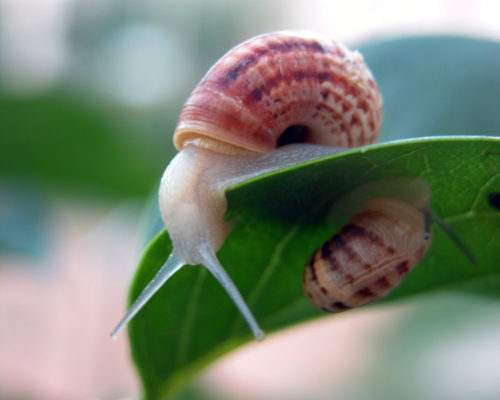
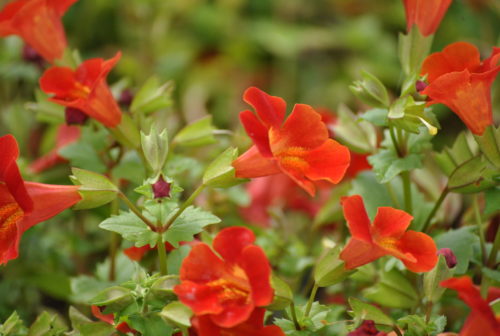
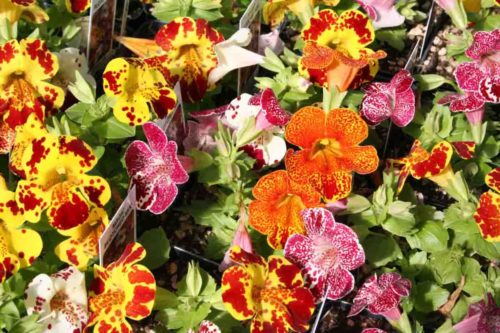
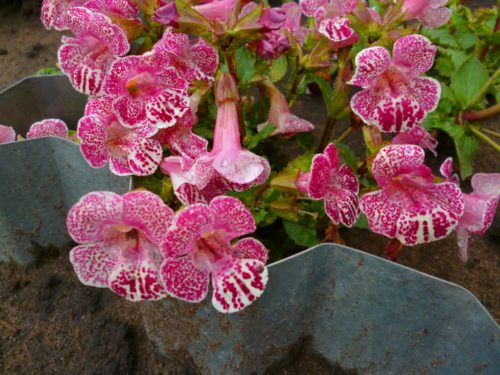












 Start a discussion ...
Start a discussion ...